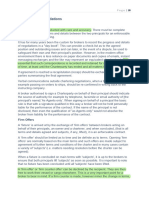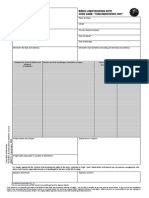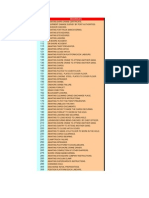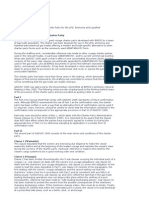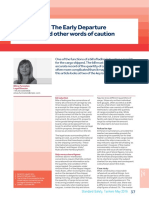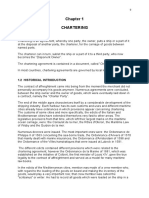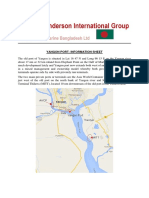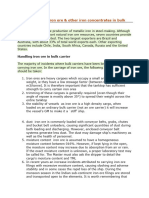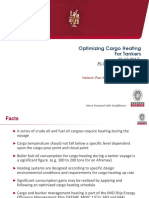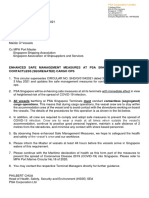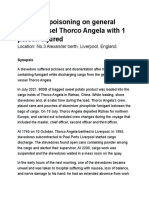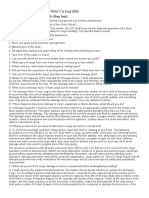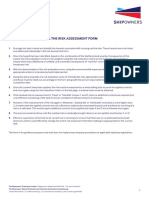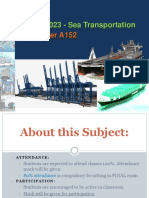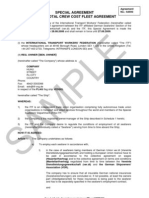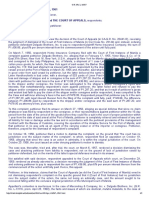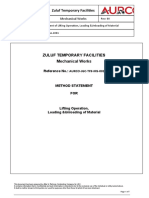0% found this document useful (0 votes)
339 views6 pagesPreparation For Loading
This document provides guidance on planning cargo loading and unloading operations for bulk carriers to ensure safety. It outlines the important information that should be collected from the shore terminal in advance, including cargo characteristics, loading equipment details, and port restrictions. It emphasizes that a cargo stowage plan and loading/unloading plan must be devised that satisfies structural and operational limits by considering stresses on the ship's structure and synchronizing ballasting. The plan should specify each step of the operation and be revised as needed with agreement from all parties.
Uploaded by
Biplab SharmaCopyright
© © All Rights Reserved
We take content rights seriously. If you suspect this is your content, claim it here.
Available Formats
Download as PDF, TXT or read online on Scribd
0% found this document useful (0 votes)
339 views6 pagesPreparation For Loading
This document provides guidance on planning cargo loading and unloading operations for bulk carriers to ensure safety. It outlines the important information that should be collected from the shore terminal in advance, including cargo characteristics, loading equipment details, and port restrictions. It emphasizes that a cargo stowage plan and loading/unloading plan must be devised that satisfies structural and operational limits by considering stresses on the ship's structure and synchronizing ballasting. The plan should specify each step of the operation and be revised as needed with agreement from all parties.
Uploaded by
Biplab SharmaCopyright
© © All Rights Reserved
We take content rights seriously. If you suspect this is your content, claim it here.
Available Formats
Download as PDF, TXT or read online on Scribd
/ 6













